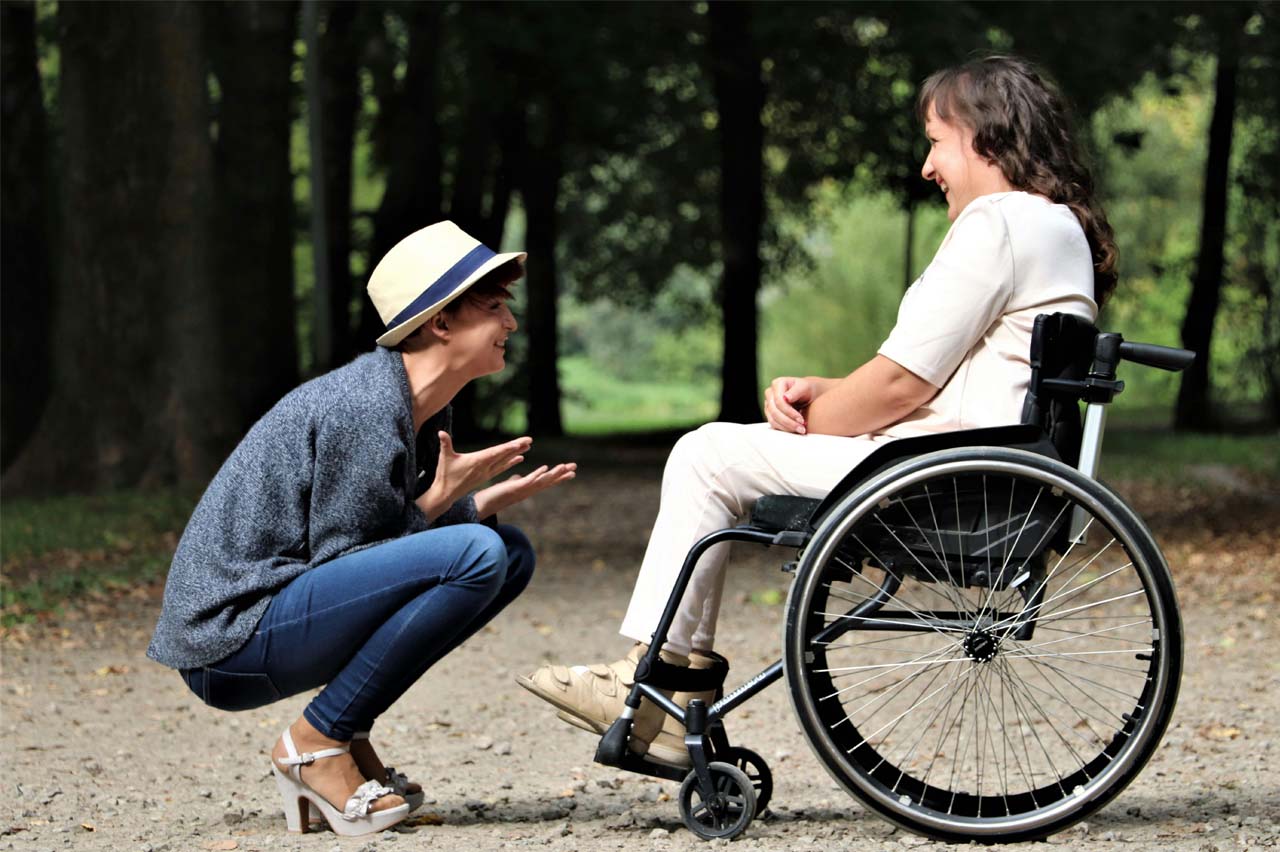Now Reading: A Guide to Wheelchair Etiquette: From a Wheelchair User’s Perspective
-
01
A Guide to Wheelchair Etiquette: From a Wheelchair User’s Perspective
A Guide to Wheelchair Etiquette: From a Wheelchair User’s Perspective

Navigating the world in a wheelchair has its unique ups and downs. While many people have good intentions, they’re often unsure about how to interact respectfully. So, let me share some thoughts, tips, and little reminders that can make a world of difference for everyone.
- Don’t Assume—Ask!
One of the biggest things to remember is that each wheelchair user’s experience is different. If you’re unsure about how to help, just ask. A simple, “Would you like a hand?” goes a long way. It’s always better to ask than to assume someone needs help or to jump in without consent. For example, once someone tried to push me up a ramp without asking, and I nearly lost my balance. While they meant well, it was more stressful than helpful. A quick “Do you need help with this?” could have avoided the awkwardness.
- Respect Personal Space
Think of a wheelchair as an extension of someone’s personal space. Leaning on it, pushing it without asking, or treating it like an object rather than part of the person’s “bubble” can feel intrusive. For instance, I’ve had strangers in line at the grocery store lean on my chair as if it were a convenient rail. It’s uncomfortable and, honestly, unnecessary. Imagine someone grabbing your bag or leaning on your shoulder without permission—awkward, right? Same rules apply here.
- Eye-Level Conversations
If you’re having a longer conversation with a wheelchair user, consider sitting or crouching to meet their eye level. It’s not a must, but it does make the interaction feel more balanced and personable. For example, at a friend’s party, one person pulled up a chair to chat, and it instantly felt more relaxed and engaging. On the flip side, I’ve had conversations where I’m craning my neck for what feels like ages, and it can be tiring.
- Avoid Over-Apologizing
Accidents happen. If you accidentally block someone’s path or bump into a wheelchair, a quick “Sorry!” is fine—there’s no need to go overboard. We’re all human, and making a big deal out of it can sometimes be more uncomfortable than the incident itself. One time, someone tripped over my footrest and apologized profusely for minutes. While I appreciated their sincerity, it turned an honest mistake into a drawn-out moment of discomfort.
- Watch the Pity Party
This one can be tricky. Offering help is kind, but pitying someone for using a wheelchair isn’t. Statements like “It must be so hard” or “I could never do what you do” may come from a well-meaning place, but they can feel patronizing. For instance, I’ve had people tell me, “You’re so inspiring just for being out and about,” when all I was doing was grocery shopping. Focus on shared experiences and genuine connection instead of assuming someone’s life is inherently “less than.”
- Sidewalks and Doorways: Be Aware
Accessibility can be a challenge, and we rely on spaces being navigable. If you’re walking or standing in a crowded area, be mindful of not blocking ramps, elevators, or wide doorways. A little spatial awareness goes a long way! For example, I’ve had to awkwardly ask people to move their shopping carts that were blocking a ramp. It’s not a big deal, but it can be avoided with a bit of attention.
- Kids Are Curious—That’s Okay
Children often ask questions or stare. Rather than shushing them, consider using it as a learning moment. A friendly explanation like, “That’s a wheelchair! It helps people move around,” can go a long way in normalizing disability and encouraging open, respectful dialogue. I once had a child ask me, “Why are you in that chair?” and their parent looked mortified. I just smiled and explained in simple terms. Kids are naturally curious, and it’s a great opportunity to teach kindness and understanding.
- Be Open to Learning
No one is perfect, and it’s okay to mess up. What matters is being open to correction and willing to do better. If someone points out something you said or did that wasn’t helpful, don’t take it personally—just see it as an opportunity to grow. For example, a friend once joked about racing me in my chair. I let them know it felt a little dismissive, and they appreciated the feedback and avoided similar comments in the future.
- Celebrate the Person, Not Just the Chair
While a wheelchair is a part of our daily lives, it’s not all of who we are. Take time to connect on shared interests, passions, and life experiences. We love talking about our favorite shows, books, or hobbies as much as anyone else! For instance, I’ve had some of the best conversations about favorite TV series with people who didn’t focus solely on my disability.
- Advocacy Is Allyship
Finally, being a good ally means standing up for accessibility and inclusion. If you see barriers that could be improved—like a business without a ramp or inaccessible events—say something. Your voice can amplify the need for change in ways that help the whole community. For example, a friend once brought up the lack of an elevator at a community center, and their advocacy led to changes that made the space more inclusive for everyone.
Final Thoughts
The bottom line? Approach interactions with respect, curiosity, and kindness. Wheelchair users navigate a world that’s not always built with us in mind, but small gestures of understanding can bridge the gap. By learning and growing together, we create a more inclusive and enjoyable world for everyone. And who doesn’t want that?
